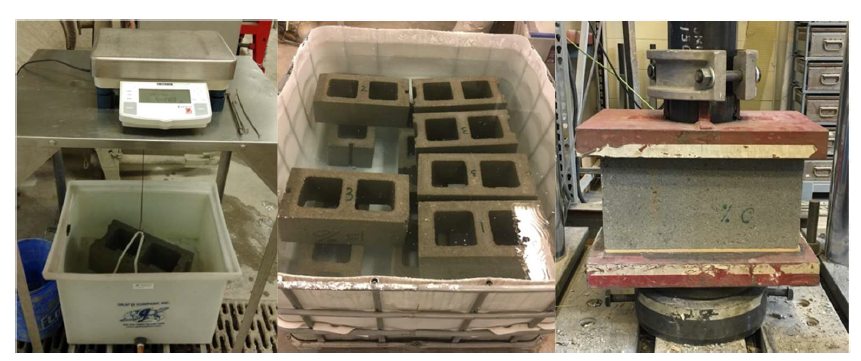Ahmed Gheni, Mohamed ElGawady, Monika Nain, and Jason Thompson
Ahmed Gheni, Lecturer, Dept. Civil Engineering, Komar University of Science and Technology, Iraq, ahmed.gheni@komar.edu.iq
Mohamed ElGawady, Professor and Benavides Scholar, CArE Engineering, Missouri S&T, Rolla, MO, USA, elgawadym@mst.edu
Monika Nain, Engineering Projects Manager- Structural Hardscapes, NCMA, Herndon, Virginia, USA, mnain@ncma.org
Jason Thompson, Vice President of Engineering, NCMA, Herndon, Virginia, USA, jthompson@ncma.org
ABSTRACT
This work proposed utilizing crumb rubber as a partial aggregate replacement to provide ecofriendly alternative segmental retaining wall units with enhanced freeze-thaw durability. After an investigation to determine the optimum size and replacement ratio of the crumb rubber, the fine aggregate was replaced with comparable sizes of rubber particles in three volume percentages of 5%, 10%, and 15% producing rubberized segmental retaining wall (RSRW) units in a manufacturing plant and the laboratory of Missouri University of Science and Technology. ASTM
C666/C666M and ASTM C1262/C1262M standard tests were utilized to examine the freeze-thaw durability of the produced units, where the tested specimens were subjected to full-water submergence and partial submergence. The results indicated an optimum rubber ratio of 5%, which resulted in higher compressive strength and lower water absorption than that in the conventional SRWs. Also, the freeze-thaw durability according to both tests was significantly improved after incorporating the rubber particles. Results from ASTM C666/C666M test showed that replacing the fine aggregate with 5% and 15% of rubber reduced the average accumulated weight loss from 20% to 2.6% after 150 freeze-thaw cycles which represented a 93% increase in durability. Besides, specimens with 5% rubber were able to reach 240 freeze-thaw cycles before collapse compared to only 120 cycles for the conventional SRWs. A similar trend was reported from the ASTM C1262 /C1262M test, where the average accumulated weight loss was reduced from 0.2% to 0.13% and 0.15% after 140 freeze-thaw cycles which represented an increase of 35% and 25% in the durability for specimens with 5% and 15% rubber, respectively. The reason behind these improvements was attributed to the increase of the ultimate strain capacity of RSRWs which allowed the newly proposed materials to absorb higher freezing deformations.
KEYWORDS: crumb rubber, durability, freeze-thaw, rubberized segmental retaining wall units



